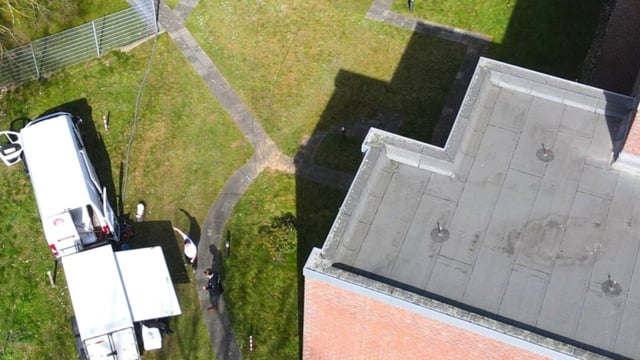
A better quality of life, lower operating costs, and an active contribution to climate protection.
Retrofit insulation for greater comfort and lower energy costs
If walls could talk, the two apartment buildings at Rheydter Straße 168 to 174 in Grevenbroich would certainly have a lot to say—about decades of weathering wind and rain and protecting generations of residents. Built in 1977, the buildings now have a total of 45 rental apartments for all age groups – from singles and young families to senior citizens. Currently, 53 tenants live there. However, over the years, not only have energy efficiency and climate protection requirements risen steadily, but construction and energy costs have also increased significantly. The two buildings were no longer able to meet the resulting challenges with their existing structure. For Bauverein Grevenbroich eG, as the developer and investor, this meant not only that modernization was necessary to maintain the value of the properties, but also that it had to find an economical and sustainable solution for this measure. The inner-city location of the Grevenbroich-Elsen district added to the complexity of the project: limited space, the need to protect the surrounding area from construction noise and dust, and the requirement to keep the apartments occupied during the work meant that precise planning, suitable insulation material, and efficient implementation were essential.
New inside, preserved outside
From March to April 2025, the approximately 2,000 square meters of facade surface of the apartment buildings were upgraded energetically with the high-performance blowing wool insulation PURE FLOC KD from URSA. The work was carried out by Hansen Dämmtechnik from Hückelhoven. The double-shell masonry with clinker brick cladding was retained, preserving the Rhineland brick architecture. This brought not only design advantages but also economic benefits: there was no need for extensive work on the building envelope, which significantly reduced costs and effort. At the same time, modern, energy-efficient, and climate-friendly living conditions were created without changing the character of the neighborhood.
Two truckloads with over 16 pallets of URSA blowing wool insulation and around four weeks of work were required for the large-scale facade. Targeted core insulation significantly optimized both the thermal building envelope and the indoor climate. “The result is improved energy performance, increased living comfort, and permanently lower operating costs,” says Bauverein Grevenbroich eG. The project is one of many forward-looking residential construction projects by Bauverein Grevenbroich eG that aim to achieve sustainable urban development.
Optimal thermal insulation
URSA PURE FLOC KD for cavity wall insulation in double-shell masonry was used in Grevenbroich. It is characterized by very low thermal conductivity of 0.034 W/mK. This efficiently reduces heat loss, leading to a significant reduction in heating costs. For residents, this means lower energy costs in the long term and a more stable indoor temperature, which increases living comfort.
The raw density of the pressure-compacted blowing wool insulation is 30 to 40 kilograms per cubic meter. This contributes to the stability and settlement resistance of the material, ensuring that it retains its shape and does not settle even after many years. The settlement resistance also guarantees consistent insulation performance, preventing cold drafts and uneven heating loads and thus ensuring a comfortable living environment. The blowing wool insulation is suitable for both old building renovations and new construction.
Fireproof and low-noise
The PURE FLOC KD insulation material is classified in the highest fire protection class A1 according to DIN EN 13501-1, which means it is non-combustible. This significantly increases safety in the building and offers residents additional protection, as in the event of a fire, the insulation material does not support the spread of fire within the building structure and its non-glowing behavior prevents repeated ignition. In addition, the insulation material impresses with its optimal sound insulation properties. With a length-related flow resistance (AFr) of over 20 kilopascals per second per square meter, it effectively dampens disturbing outside noise and contributes to more pleasant room acoustics. For residents, this means a quieter living environment, especially in urban areas with high traffic volumes, which minimizes noise pollution.
With system and aerial platform
Hansen Dämmtechnik blew the loose insulation material into the prepared cavities on site using flexible hoses. To do this, cross joints were drilled into the masonry at specific points, through which the material was fed. The blown-in flakes adapt to the geometry of the cavity and ensure that it is filled completely and without gaps – without damaging the existing building fabric. With facade areas as large as those in Grevenbroich, extensive machinery is required to insulate the entire surface efficiently. Hansen Dämmtechnik relied on powerful blowing machines from IsoBlow and Stewart, which enabled fast and precise processing.
Various options were used to access the different areas of the building: scaffolding was used in some cases for the lower parts of the buildings. Where this was not possible, ladders were used. The upper part of the building was made accessible with a lifting platform. The flexible use of these options contributed to the cost-effectiveness and efficiency of the insulation measure.
Green insulation, healthy living
The sustainable production of URSA blowing wool insulation materials underlines their ecological approach. The insulation material consists of a high proportion of recycled glass, which helps to conserve resources. Free of formaldehyde and harmful substances, it also has a positive effect on the indoor climate. On the one hand, the risk of mold growth or moisture damage is reduced because the inner surface of the insulated exterior wall becomes warmer. On the other hand, the insulation material is hydrophobic, so it does not absorb moisture. And if moisture does get into the rear masonry, the diffusion-open structure of the insulation helps the masonry to dry out, protecting the building fabric and improving the quality of living. In addition, professional insulation of the building envelope contributes to a significant reduction in heat loss, which considerably reduces heating energy requirements and CO2 emissions. URSA PURE FLOC KD meets the high requirements of the “Blue Angel” environmental label and the “Eurofins – Indoor Air Comfort Gold” certificate.
With the high-performance blowing wool insulation PURE FLOC KD from URSA, a solution has been found that meets the high requirements for energy efficiency, sound insulation, and fire protection. The choice of insulation material is in line with sustainable renovation that respects the identity of existing buildings while offering the economic advantages of cost-effective, efficient insulation. The result: a better quality of life, lower operating costs, and an active contribution to climate protection. Grevenbroich proves once again that energy-efficient renovation is much more than just a new façade—it is an investment in the future. For a home that feels good and will tell many stories to come.
Project details
- Product: URSA PUREONE Pure Floc
- Application: Double-shell masonry
- Building type: Multi-family house
Building
- Project: Energy-efficient facade renovation of two multi-family houses in Grevenbroich
- Client: Bauverein Grevenbroich eG, Grevenbroich
- Contractor: Hansen Dämmtechnik, Hückelhoven
- Insulation material: URSA PURE FLOC KD blowing wool insulation
- Construction period: Construction period: 3/2025 to 4/2025
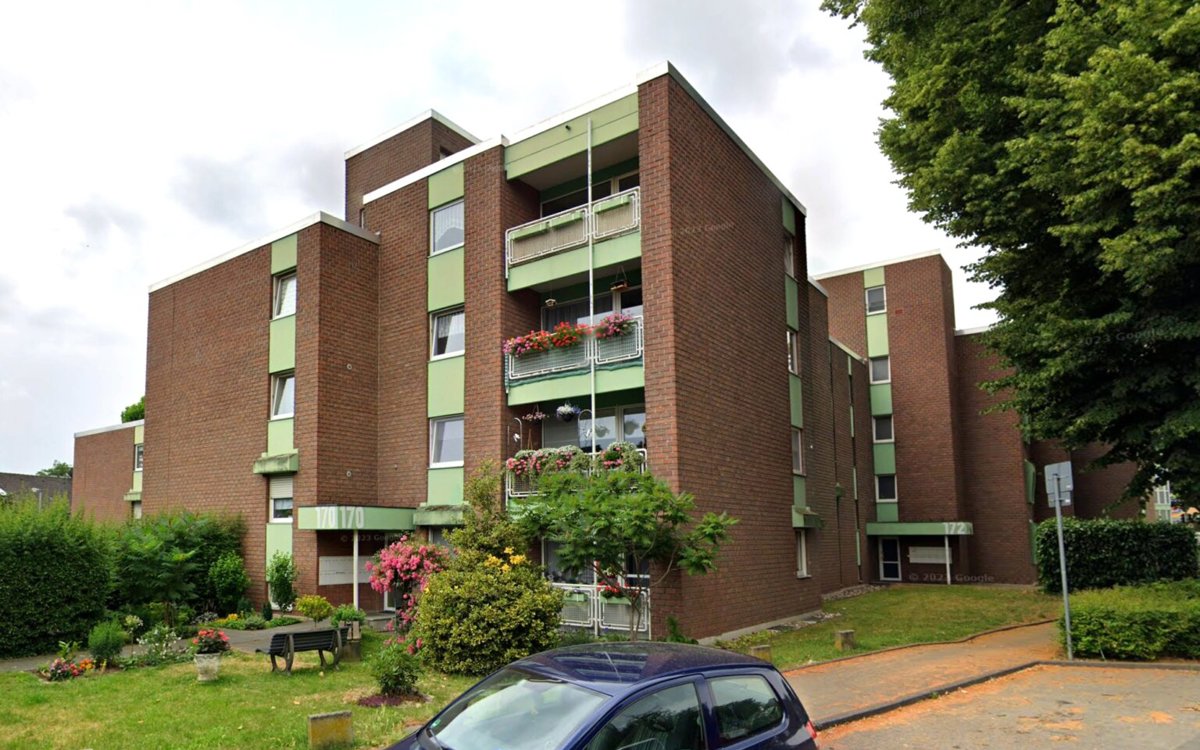
The two buildings on Rheydter Straße were built in 1977 and now offer 45 rental apartments. Before renovation, they no longer met today's requirements for energy efficiency, living comfort, and climate protection. (Photo: URSA)
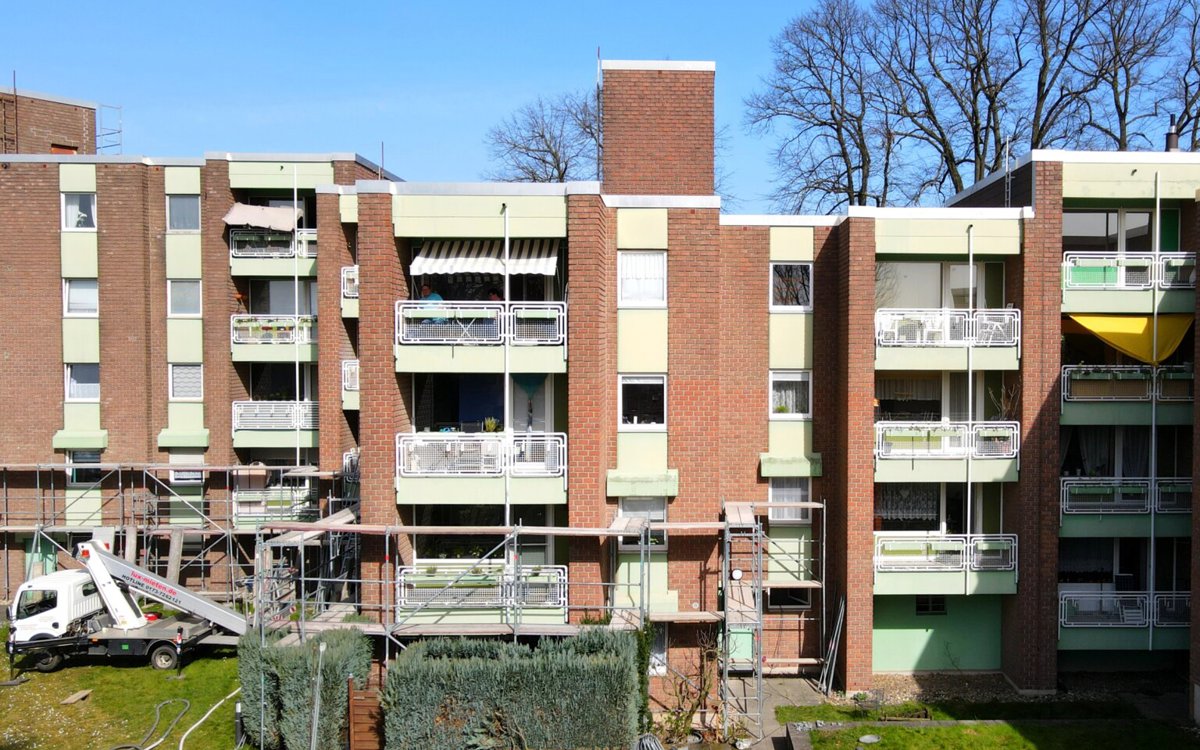
The double-shell masonry with clinker brick facing, and thus the Rhineland brick architecture, remained intact. The blowing wool insulation enables economical preservation. (Photo: URSA)
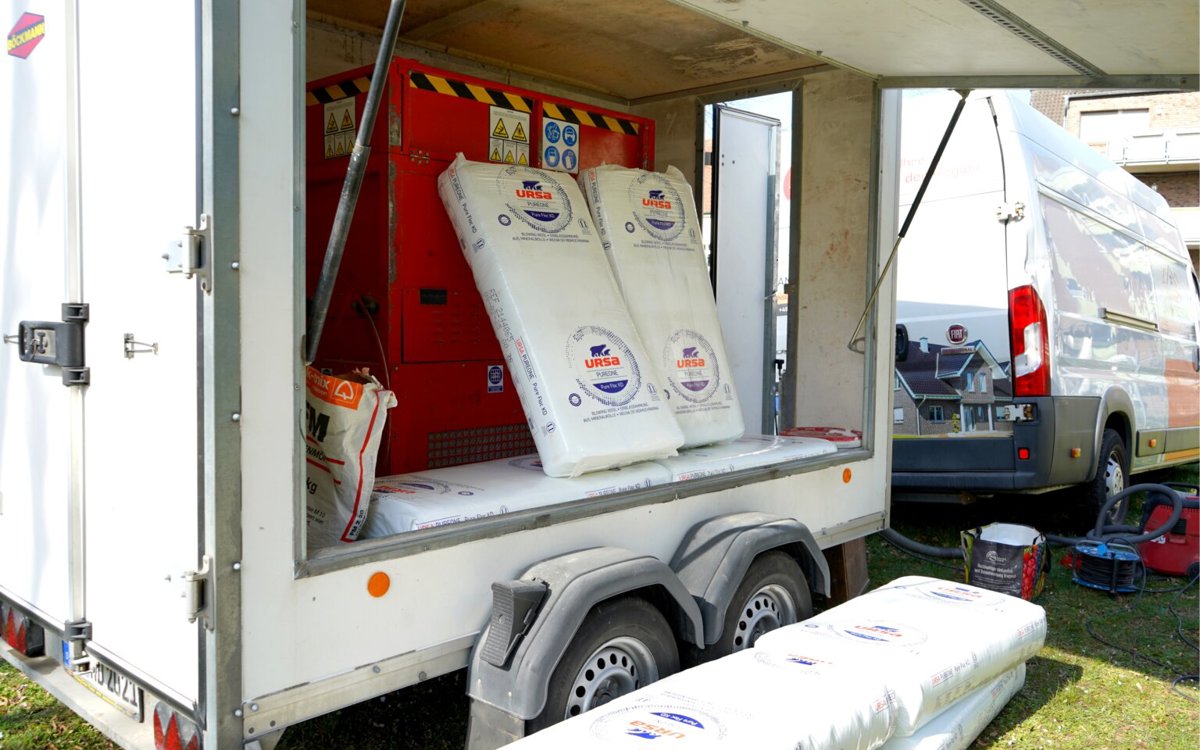
The construction company Hansen Dämmtechnik arrives at the construction site with the blown machine and all the necessary materials. (Photo: URSA)
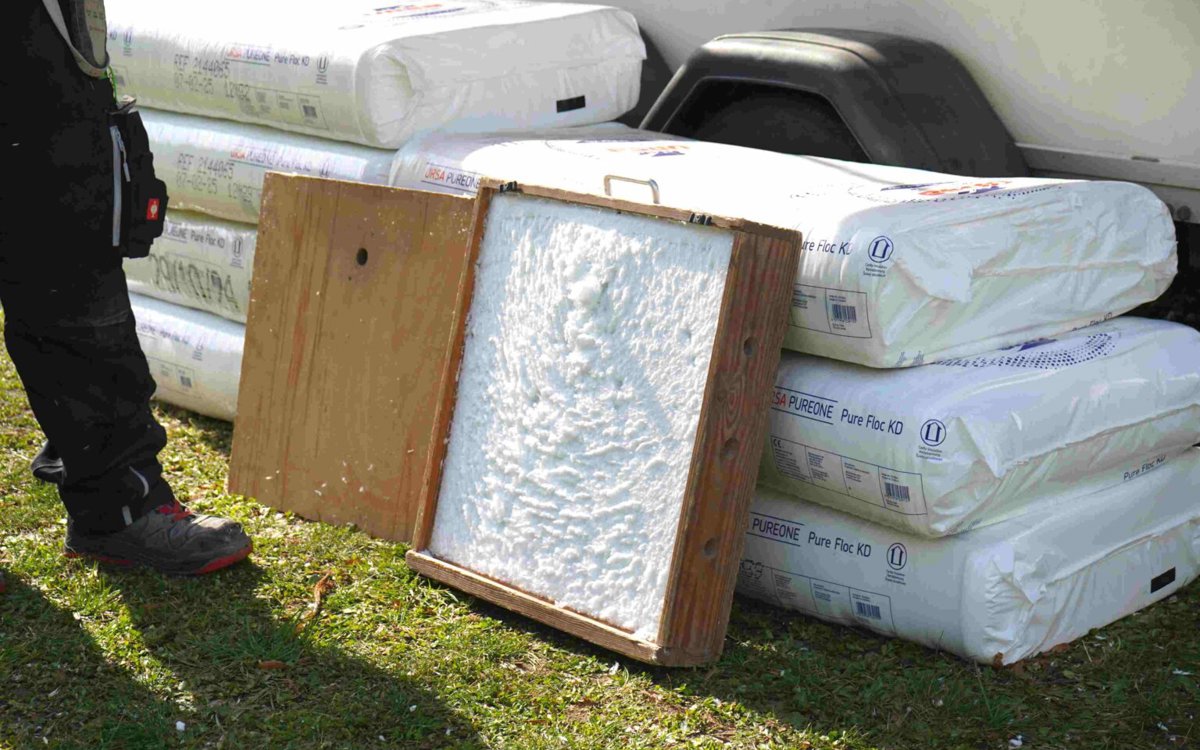
A test box is used to check the correct fill quantity and density of the insulation material in advance to ensure complete and effective insulation. (Photo: URSA)

Scaffolding enabled safe access to the facade areas. (Photo: URSA)

A cherry picker helped to insulate the upper parts of the facade quickly and safely. (Photo: URSA)
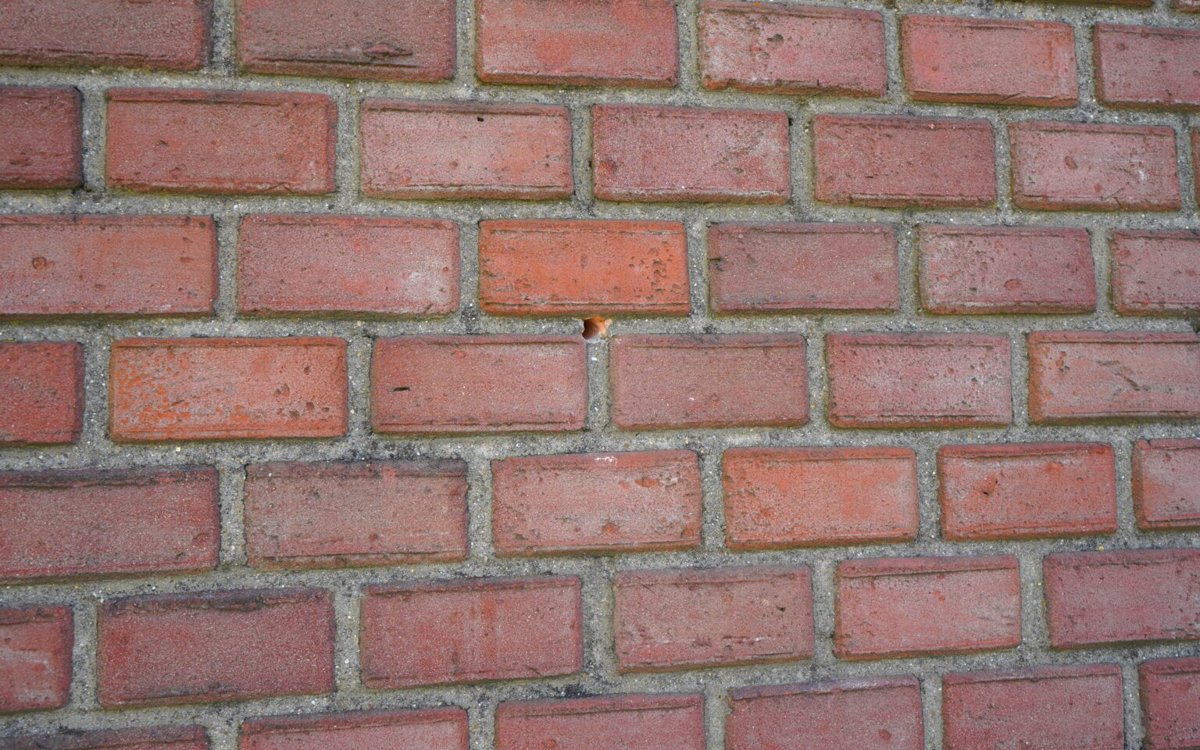
In the blow-in method, holes are drilled into the cross joints and the insulation material is blown into the cavities. (Photo: URSA)
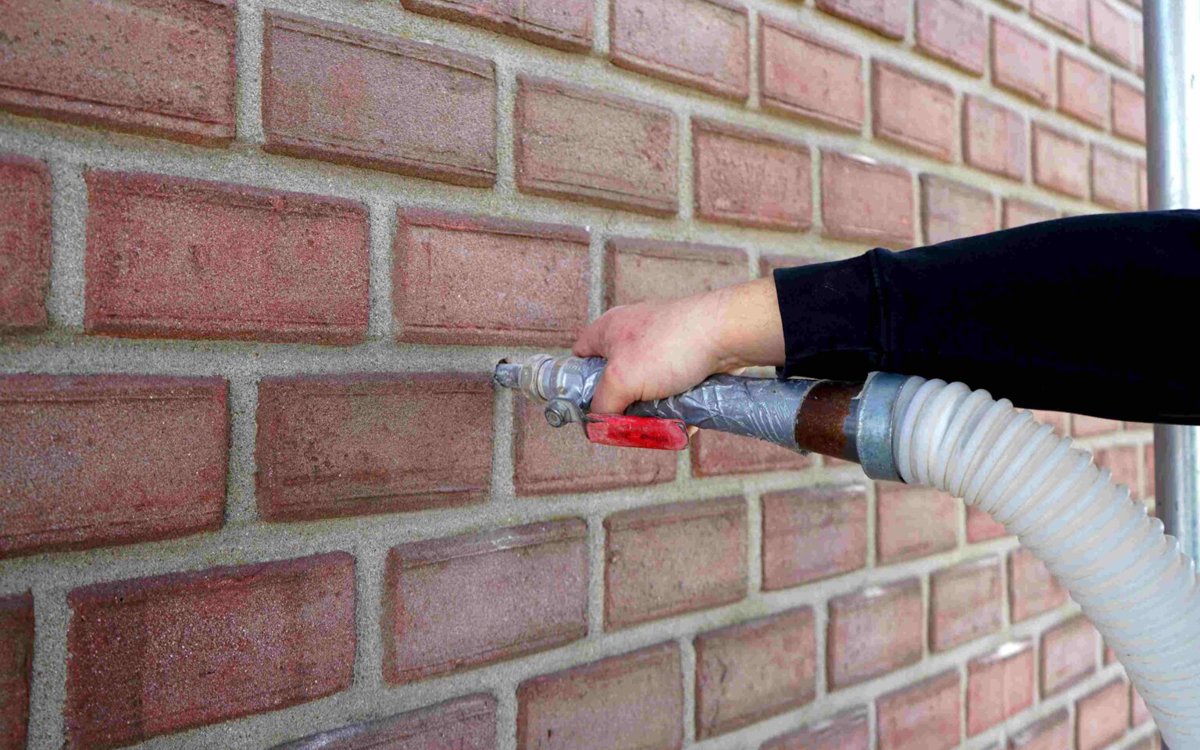
The blowing process is precise and controlled to ensure that the insulation material is evenly distributed in the cavities of the facade. URSA blowing wool insulation guarantees continuous thermal insulation and minimizes thermal bridges, optimizing the energy efficiency of buildings. (Photo: URSA)
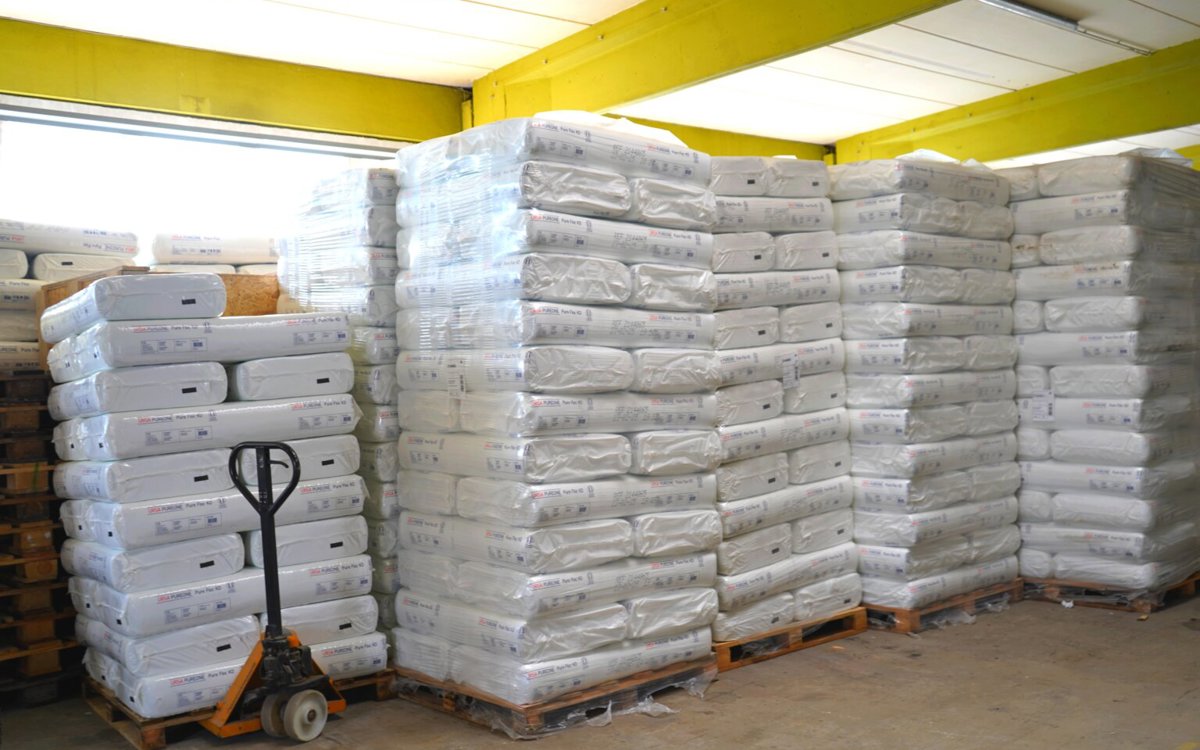
Thanks to its compression, the mineral blowing wool insulation can be stored effectively and in a space-saving manner. (Photo: URSA)
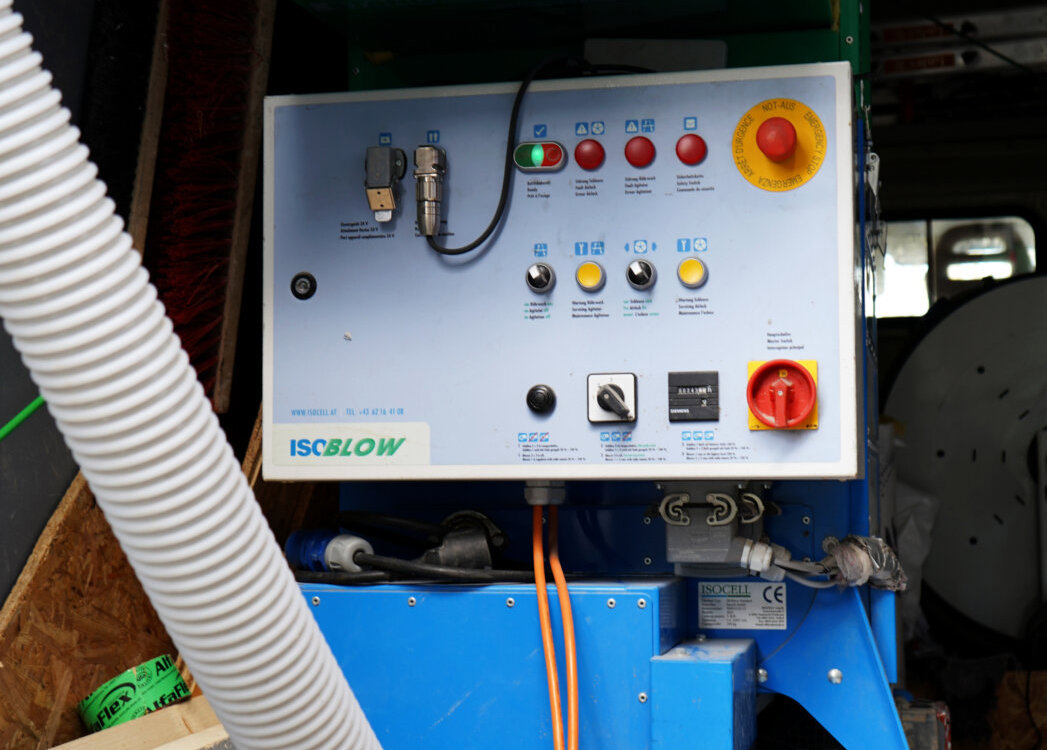
The compressed insulation material is loosened by a powerful blowing machine and blown evenly into the facade. This enables effective core insulation. (Photo: URSA)
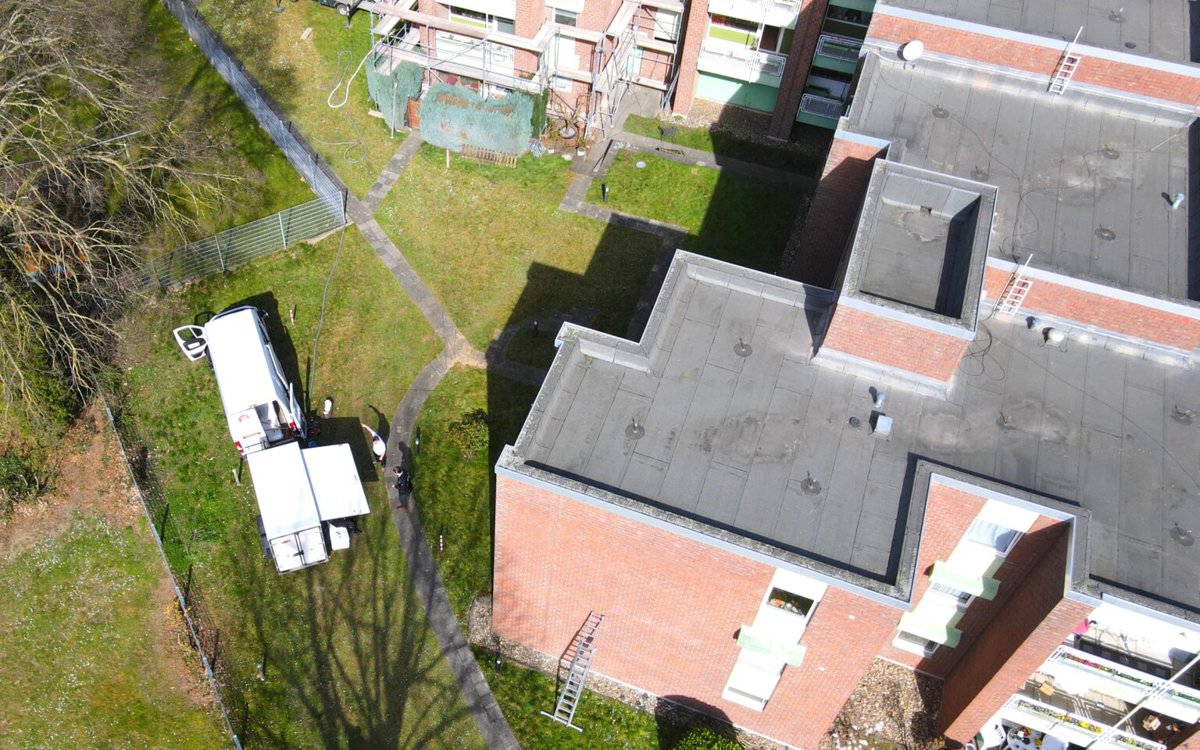
Thanks to the efficient blowing wool insulation, the entire 2,000 square meters of facade surface could be treated quickly and precisely without any structural alterations. URSA blowing wool insulation consists of a very high proportion of recycled glass and is free of formaldehyde and harmful substances. It has been awarded the Blue Angel and Eurofins Gold certificates and improves both the indoor climate and the CO2 footprint. (Photo: URSA)